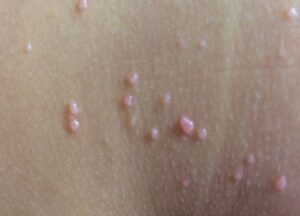5 Tricks for Dealing With a Child who Bites, Pinches, or Hits


Are you having trouble with a child who hits, pinches, or bites other children? This can be quite embarrassing and leave other parents and caregivers with a poor opinion of you and or your child. Try not to take this personally. These behaviors occur with more children than you think, and your child will outgrow them in time.
There are many theories as to what causes childhood aggression. Some experts feel it is a learned behavior. One study out of the University of Montreal suggests that physical aggression in toddlers is more a result of genetic influences than environmental factors. Most experts agree that aggressive behavior in toddlers is a typical part of development.
These troubling behaviors occur most frequently in the toddler years and have been known to occur in preschoolers as well. From the age of 1-3 years of age, toddlers are going through a tremendous explosion in cognitive development, but the ability to express themselves doesn’t typically develop as fast. This can leave both the toddlers and the people caring for them very frustrated. In addition, toddlers are becoming increasingly independent and assertive. As a result, toddlers are very self-involved and strive for immediate satisfaction.
Often these behaviors stem out of frustration and an inability to express it in an appropriate manner. In time, as they become more verbal, they will be able to verbally express themselves and their feelings. When they can be more expressive, the aggressive behaviors diminish. Here’s how to help lessen the aggressive behavior.
- Track the trigger—When you know what events or actions regularly illicit the aggressive response, you can develop strategies to prevent it.
- Limit exposure to bad influences—Children learn from their environment. They can learn aggressive tendencies from television, video games, peers, and older siblings. They will mimic what they see whether it is appropriate for the situation or not.
- Be a good role model—Teach problem-solving skills. Do not spank or hit your child as a form of punishment. This will only reinforce the negative behavior. Instead remove him or her from the situation for a few minutes. A little timeout to cool off is most helpful in the heat of the moment. It is suggested one minute for every year of age.
- Supervise playgroups—Praise positive behaviors when you see them.
- Offer appropriate ways to express themself—Use and model a lot of feeling words. “You seem frustrated…” “I understand that is disappointing…” and then explain how your child should respond.
Be patient and consistent in your strategies. As your child’s ability to communicate develops, he or she will become better at using words to express frustrations and at handling daily offenses.
Sources:
- North Caroline State University
- Childhood Aggression: Where does it come from? How can it be managed?
Zero to Three. National Center for Infants, Toddlers and Families.
University of Montreal - Toddler aggression is strongly associated with genetic factors.
Powered by Bundoo®










































